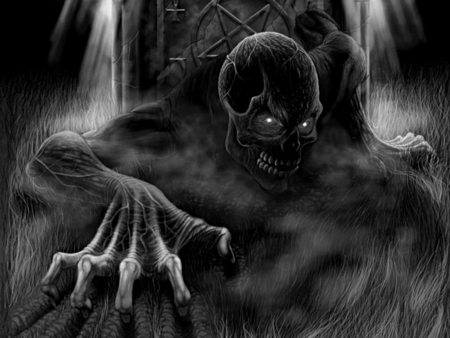Christmas 2013 saw the return of the classic ghost story. The BBC began the resurgence in 2005, when they resurrected the original ‘”A Ghost Story for Christmas”, drama series which began back in 1971, and fell out of popularity by 1978. Following the success of M.R James’s The Tractate Middoth, adapted by the ubiquitous Mark Gatiss, the gothic ghost story revival looks like it is here to stay. ITV’s The Thirteenth Tale and P.D James’ Gothic murder drama, Death Comes To Pemberley and even BBC2’s rather dark Jane Eyre, completed a great spooky line up this season. There was an interesting documentary profile of the M R James by Gatiss, following The Tractate Middoth, which explored the idea of the Christmas ghost story, and the comforting contrast between cosy family seasonal togetherness and the dark, frightening world of the gothic. Instead of pantomimes and A Christmas Carol, many dramatic societies are now choosing to put on a Christmas ghost story of their own.
Unleash Your Dark Side
So, what are the elements you will need if you wish to create a dark, gothic drama of your own. If you glance at our online catalogue you will see the sort of items you might hire to perfect the look. TV and film companies use our props when they need an instant touch of the dark side, and it is not a difficult look to achieve. Just cast your mind back to great black and white gothic classics, such as Wuthering Heights, and Rebecca, with their wild storms, and crumbling buildings. It is these elements you must endeavour to capture in your prop and scenery choices. You need contrasts. Darkness and light.
Gothic Style
Gothic architecture is essentially medieval, and Gothic fiction is the late-Victorian literary movement that blended horror and romanticism, with stylistic elements of medieval architecture thrown in. Turrets and crenulations, twisting ivy and stone-build castles featured heavily, and the genre has developed from these beginnings into the form we see it today. Darkness pervades a gothic scene. Through the gloom and sinister mood the audience can dimply perceive wrought iron gates, towers, and gargoyles. Interiors are typically clad in wooden panelling, the haunted house staple, all lit by stage candlelight. This all helps to set the scene. Corny? For sure. The joy of any genre is the familiar stylistic elements. Your audience would be disappointed if you don’t provide it in spades.
Setting The Scene
From our props list you can see that it is possible to provide all manner of gothic items. Old leather-bound books should grace any haunted house library; ruined churches demand heavy candleholders, an iron-clad bible and a lectern; graveyards need bones, gravestones, coffins and perhaps a mummified body or two; railings must be iron, arches must be ornate, and gates squeaky and a little off kilter. All of these items are ready and waiting for your ghostly gothic production. It’s just a question of finding your dark side and unleashing it – creatively, of course.


